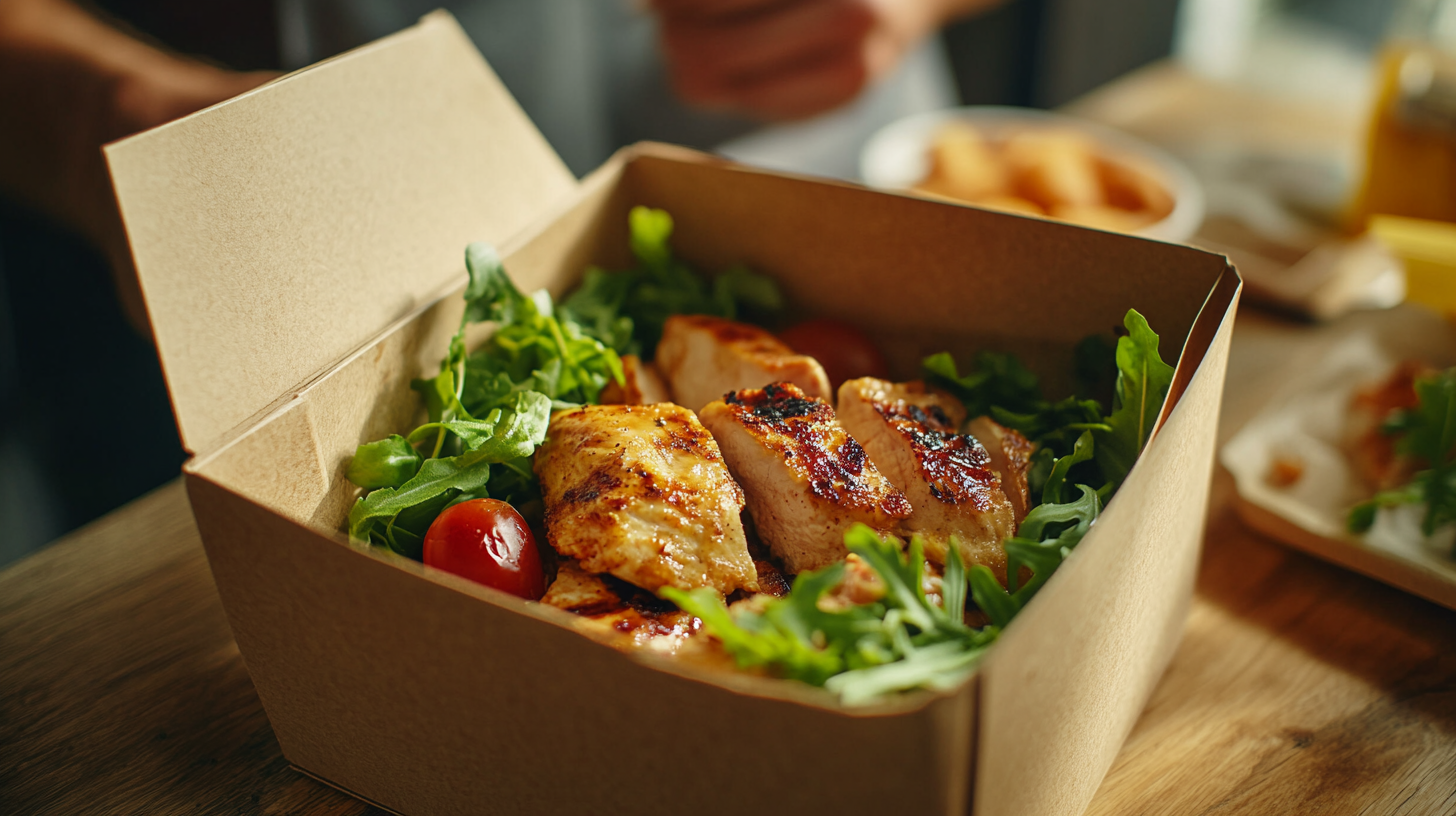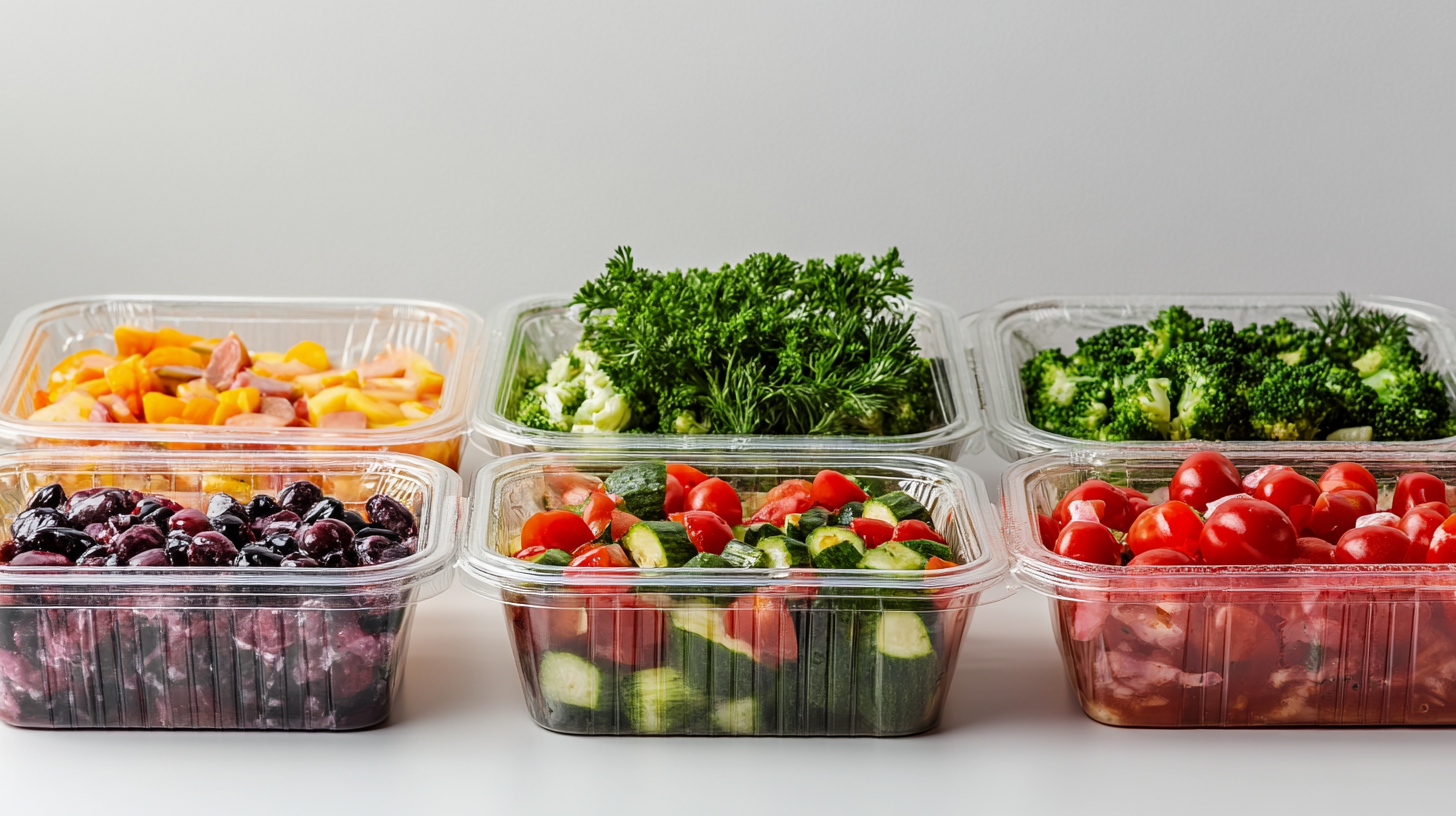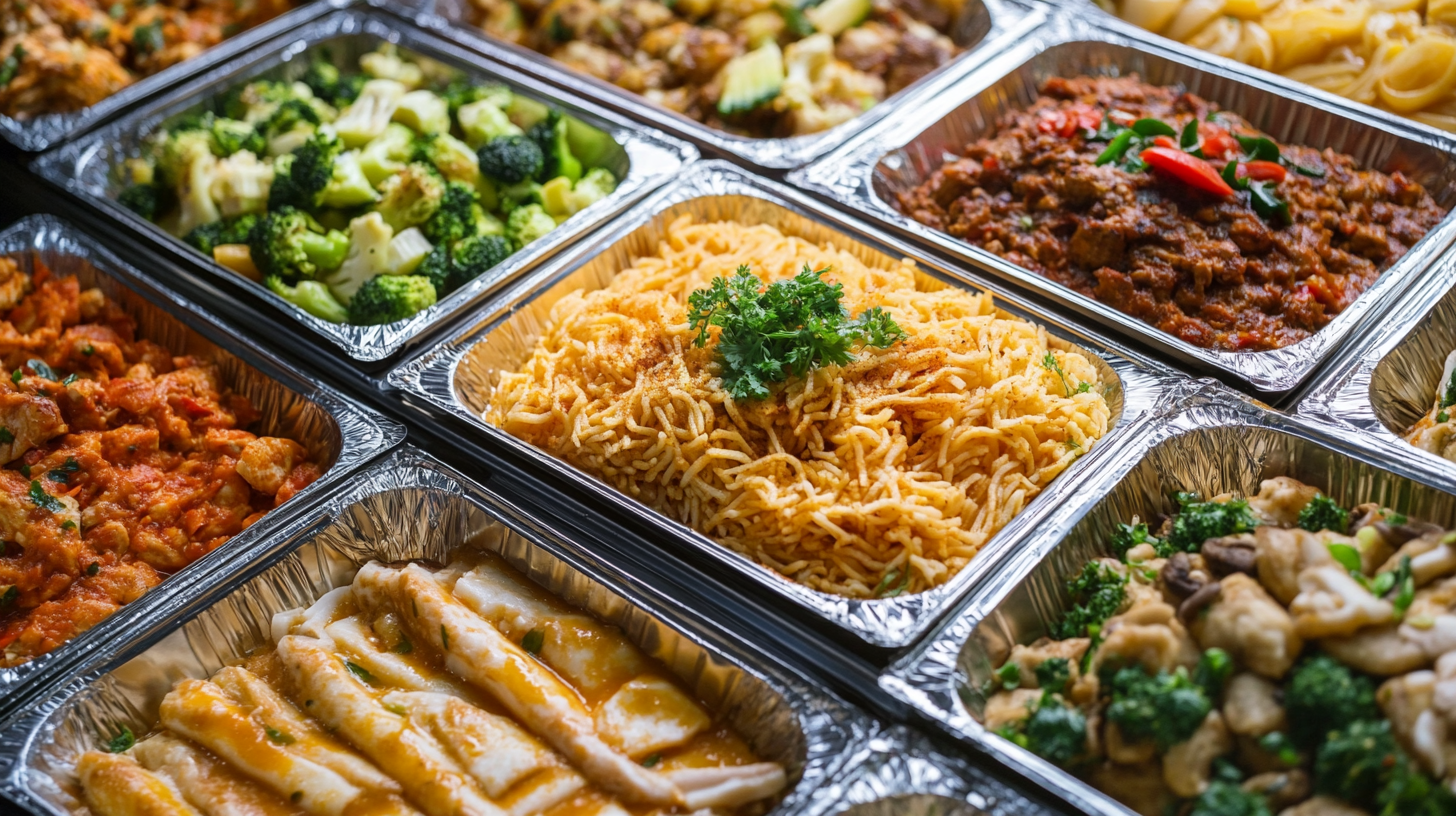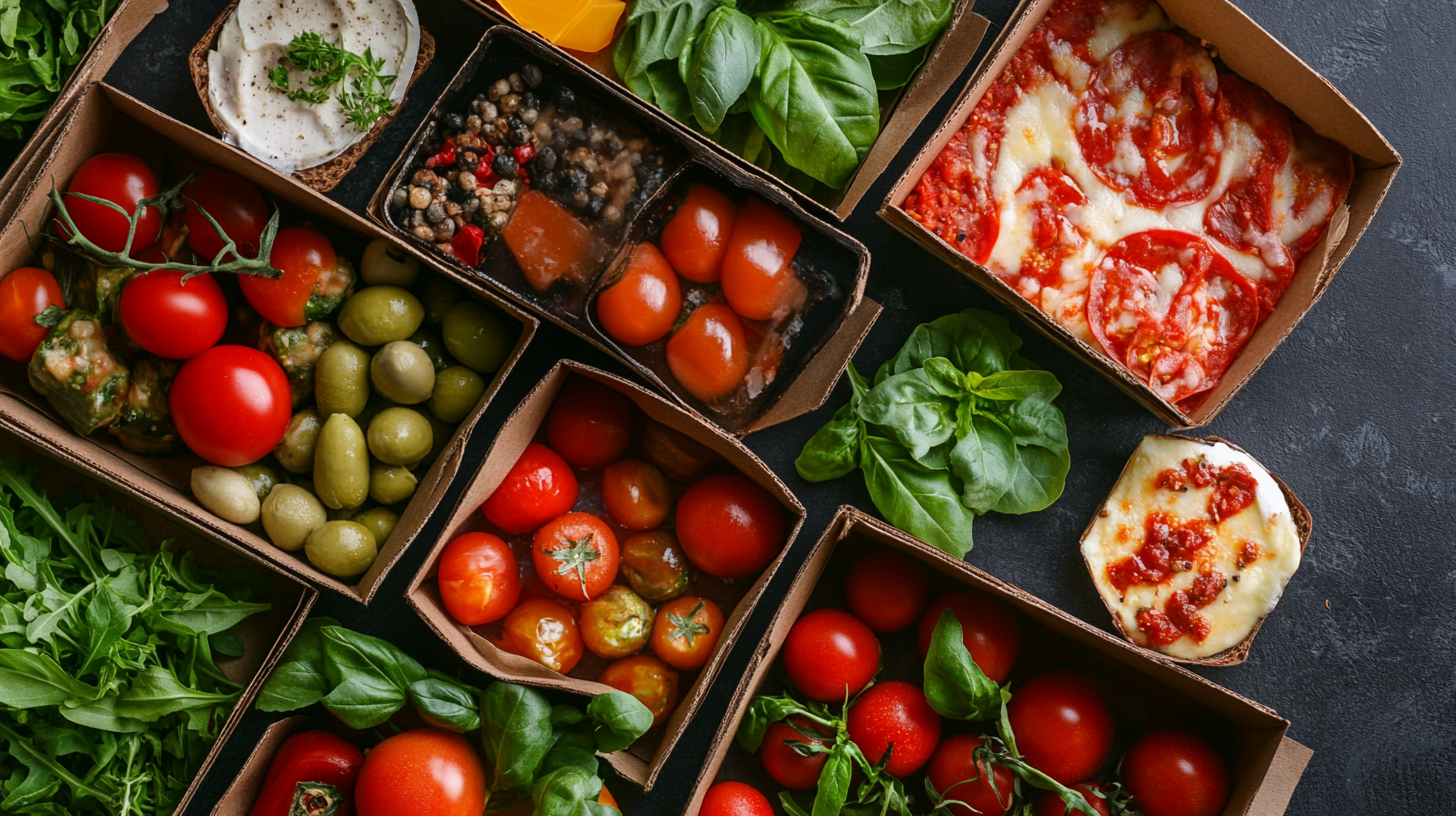Evaluating Prepared Foods Packaging: Key Differences That Impact Your Supply Chain Choices
The landscape of prepared foods packaging is undergoing significant transformation, driven by evolving consumer preferences and sustainability initiatives. According to a recent report by Fortune Business Insights, the global prepared food market is projected to reach $321.78 billion by 2027, fueled by demands for convenience and ready-to-eat meals. As this segment of the food industry expands, understanding the nuances of prepared foods packaging has become crucial for supply chain stakeholders. The materials used, sustainability practices, and packaging design can dramatically influence not only the shelf life of products but also consumer perception and purchase decisions.
Moreover, a study by MarketsandMarkets indicates that sustainable packaging is no longer just a trend; it is becoming a necessity, with 66% of consumers willing to pay more for products packaged sustainably. This shift underscores the significance of evaluating prepared foods packaging options, as choices made at this stage can impact everything from production costs to environmental footprints. By delving into key differences in packaging types, stakeholders can better navigate their supply chain decisions and enhance overall product performance, ensuring they meet both market demands and regulatory standards in an increasingly competitive environment.

Understanding the Role of Packaging in Prepared Food Supply Chains
In the world of prepared foods, packaging plays a critical role in shaping supply chain decisions and ensuring product integrity. With the growing demand for convenience and quality, the packaging must not only protect the food but also enhance its appeal to consumers. From materials that maintain freshness to designs that facilitate transportation, the choices made in packaging significantly impact the overall efficiency and sustainability of the supply chain. One key aspect of packaging in prepared food supply chains is its function in preserving product quality. Advanced packaging technologies, such as vacuum sealing and modified atmosphere packaging, help extend shelf life, which reduces waste and increases profitability. Furthermore, packaging solutions that are easy to stack and transport can optimize space during shipping, leading to more efficient logistics operations. This in turn can result in lower costs and faster delivery times, making it an essential consideration for food manufacturers and distributors. Another critical factor is the environmental impact of packaging materials. As consumers become more environmentally conscious, sustainable packaging options are increasingly prioritized. Choosing biodegradable, recyclable, or reusable materials not only meets consumer demand but also aligns with corporate social responsibility goals. This shift necessitates a careful evaluation of packaging suppliers and materials, as well as a reevaluation of the entire supply chain strategy. Consequently, understanding the role of packaging is vital for any business looking to stay competitive in the prepared foods market.

Comparing Materials: Plastic vs. Glass vs. Sustainable Options
When evaluating prepared foods packaging, one of the most critical aspects to consider is the choice of materials: plastic, glass, or sustainable alternatives. Each option presents unique characteristics that not only influence the freshness and safety of the food but also impact the supply chain dynamics.
Plastic packaging, known for its lightweight and durability, offers convenience in handling and transportation. However, the environmental concerns associated with single-use plastics are significant. Many consumers are becoming increasingly mindful of their environmental footprint, leading manufacturers to rethink their reliance on plastic. Additionally, while plastic can be cost-effective, it may not always provide the best barrier against moisture and oxygen, potentially affecting product quality over time.
Glass, on the other hand, is often perceived as a premium option. It is non-reactive and can preserve the integrity of the food without leaching harmful substances. Though heavier and more fragile, which can complicate logistics, glass is fully recyclable and carries a strong appeal for eco-conscious consumers. This can enhance brand loyalty as consumers often associate glass packaging with higher quality and taste.
Sustainable options, including biodegradable materials and plant-based plastics, are gaining traction in the industry. These alternatives can address both environmental impact and consumer demand for responsible packaging solutions. Choosing these materials often requires a reevaluation of supply chain processes, as manufacturers may need to develop new partnerships or invest in innovative technologies. Each material choice ultimately plays a pivotal role in shaping the trajectory of prepared foods packaging, influencing everything from production costs to consumer perception.

The Impact of Packaging Design on Consumer Perception and Sales
The packaging design of prepared foods plays a crucial role in shaping consumer perception and influencing sales. First impressions matter, and in a crowded marketplace, eye-catching packaging can be the difference between a product that flies off the shelves and one that languishes unnoticed. Innovative designs that combine aesthetics with functionality not only attract consumers but also convey essential information about the product, such as its quality, freshness, and health benefits. When consumers feel positively about how a product looks, they are more likely to trust the brand and make a purchase.
Moreover, the materials used in packaging can significantly affect consumer choices. Sustainable and eco-friendly packaging options are becoming increasingly important to today's environmentally conscious shoppers. Brands that prioritize sustainability in their packaging design can enhance their appeal and differentiate themselves from competitors. Additionally, packaging that is easy to open and reseal adds convenience, which is highly valued in the fast-paced world of prepared foods. Consumers are more likely to choose products that promise an effortless and enjoyable experience, thus boosting sales.
Lastly, the impact of packaging extends beyond mere aesthetics; it plays a vital role in branding. Consistent packaging design that reflects a brand’s identity can foster recognition and loyalty among consumers. Well-thought-out packaging can communicate a brand's values and story, creating a deeper connection with the target audience. As such, companies must carefully evaluate their packaging strategies not only for their immediate impact on sales but also for their long-term effects on consumer perceptions and brand loyalty.

Logistics and Transportation: How Packaging Affects Efficiency
In today's rapidly evolving logistics landscape, the significance of packaging cannot be understated. The efficiency of transportation and logistics operations is heavily influenced by the type of packaging used. With the returnable transport packaging (RTP) market projected to grow at a compound annual growth rate (CAGR) of over 5.2% from 2025 to 2032, companies are increasingly recognizing the need for optimized and efficient packaging solutions that reduce costs and improve supply chain performance.
As organizations seek to enhance their logistics efficiency, reusable transport packaging has emerged as a game-changer. Valued at approximately USD 113.2 billion in 2024, the reusable transport packaging market is expected to see substantial growth, with a projected CAGR of over 5.8% from 2025 to 2034. This upward trend underscores the demand for sustainable practices in logistics, as businesses strive to lessen their environmental impact while simultaneously streamlining their operations.
Innovative solutions, such as AI-driven systems for container counting, are also making waves in the industry. For instance, a collaboration between manufacturers and academic institutions has led to the development of AI technologies that automate container counting, significantly boosting efficiency and reducing human error. This shift towards automation exemplifies how advancements in packaging technology are not only improving logistics efficiency but also reshaping the entire supply chain landscape.
Regulatory Considerations and Compliance in Food Packaging Choices
When evaluating prepared foods packaging, regulatory considerations and compliance are paramount for food producers looking to streamline their supply chain. Packaging not only serves as a protective barrier for the food product but also plays a critical role in adhering to various legal standards set by governing authorities. In many regions, regulations dictate the materials that can be used in food contact packaging, ensuring that they do not leach harmful substances into the food. Businesses must therefore stay abreast of these changing regulations to avoid costly recalls and legal repercussions.
Moreover, compliance with labeling requirements is essential in today's market. Accurate ingredient lists, allergen declarations, and nutritional information must be conveyed clearly to consumers. Failing to comply with these regulations can lead to penalties and diminish consumer trust. Understanding local, national, and international standards adds another layer of complexity to packaging decisions, often necessitating consultation with regulatory experts. Companies that prioritize compliance not only mitigate risks but also enhance their marketability, as consumers increasingly seek transparency in their food sources.
Ultimately, the intersection of packaging choices and regulatory compliance affects the entire supply chain. Strategic decisions about packaging materials and designs can streamline operations and improve efficiency, but they must always take into account the legal landscape to ensure that they are protecting both the business and the consumer. In this environment, proactive evaluation of packaging options is critical for success in the prepared foods market.

 中国
中国
